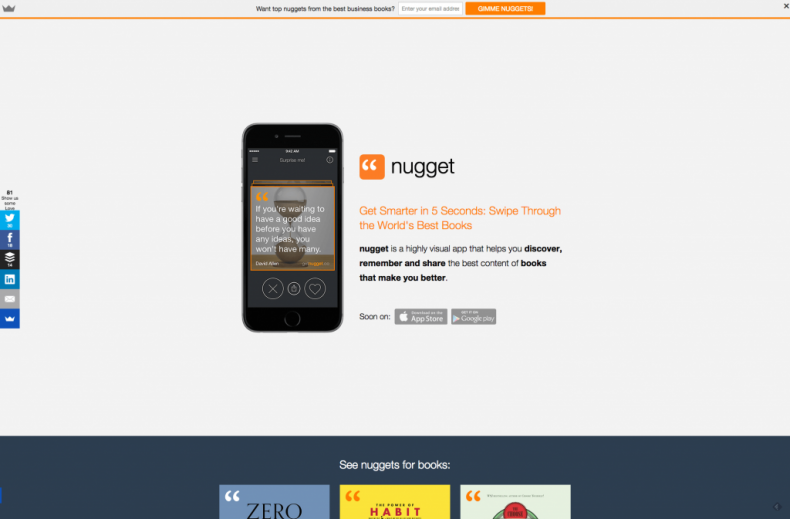Landing Pages – Why You Need Them and How They Help SEO
Whenever you begin studying search-engine optimization, or “SEO,” you’ll hear a lot about landing pages. To help more people find your website and become new customers, it’s critical for you to understand exactly what landing pages are, why you need them and how they enhance your website’s overall SEO.
What’s the point of a landing page?
A landing page is like the greeter in a bustling restaurant who welcomes visitors at the door, offers to help by answering questions and directs them to their perfect seats for a great dining experience. Without the greeters, your new customers pop in the door without a clue about whether they’ve even arrived at the right place — much less where to sit or what the specials are. Greeters prevent new arrivals from standing aimlessly at the door and then leaving if they don’t get attention. The same principle applies to your website. If your visitors don’t get the answers they need on your landing page, then they’re likely to go somewhere else — often in seconds.
Search engines like Google are scanning your website for clear, well-structured landing pages that clearly summarize the purpose of your website and its layout. Search engines give more visibility to websites with transparent landing pages that define exactly what you’re offering to your audience. To attract more customers through search engines or even word of mouth on social media, you cannot do well without clear landing pages that are helpful to your visitors. Plus, your landing page needs to meet today’s high-quality standards. Google’s weighting of where a paid ad will show and how much each click costs is often factored on the quality of the landing page to which the ad leads.”
What makes a landing page different from other webpages?
A landing page has one purpose only: It convinces visitors to take an action — not just one of many possible actions, but one action only. A good landing page turns a casual browser into someone who’s actively participating in your website’s services.
The goal of a landing page is to persuade visitors to take an action based on the goals of the page:
- Get a visitor to click — to go to another page, on your site or someone else’s.
- Get a visitor to make a purchase.
- Get a visitor to give permission for you to follow up by email, phone etc.
- Get a visitor to share you site or product with a friend.
- Get a visitor to learn something new and engage … post a comment or give you some sort of feedback.
How many landing pages do you need?
Now because landing pages are simply two-dimensional greeters that cannot respond automatically to each visitor’s needs like a live restaurant greeter, experts recommend that you create multiple landing pages optimized for the different types of visitors you get in order to make your website easier to find — which in other words, boosts your SEO.
Landing pages allow you to accomplish several things after you easily filter your audiences. First, you can separate portions of your audience based on their referral source; for example, a prospect that finds out about you on social media probably won’t have the same interests as one who finds you through a PPC ad. Using unique landing pages helps you cater your message to very specific sections of your audience. Plus, using an entry landing page can help you separate truly interested parties from visitors, since landing pages encourage immediate conversion when content is strategically directed to a taraget audience.
As a general rule of thumb, research your audience demographics and create a separate landing page for each major source of traffic that your website receives. Without knowing your audience’s keyword preferences from your research, you won’t be able to create landing pages with effective headlines.
Now before you make your new landing pages, here are the essential facts you need to know:
Specialists say your landing pages should never do any of the following:
- Don’t give people more than they can read in a few minutes.
- Don’t make false promises.
- Don’t add unnecessary forms when your contact information is enough.
- Don’t use pop-up ads.
- Don’t make videos start playing at high volume without mute options.
- Don’t tell visitors that you know everything they know. Just answer common questions.
Here’s what good landing pages look like:
Here’s what bad landing pages look like:

Lowes
In this old screenshot from Lowe’s, visitors are overwhelmed with mismatched discounts for things they’re not even looking for.

Hermes
In this older screenshot from Hermes clothing company, you’ll find no sense of navigation whatsoever.
Now put yourself in your customer’s shoes and create the kind of landing page that you want to see when you go to a website. Look at your own favorite websites and ask yourself why you subscribe to them. What do they do well that you can also do on your website? Furthermore, what are they doing that you could do better? These questions will give you a perfect landing page.










